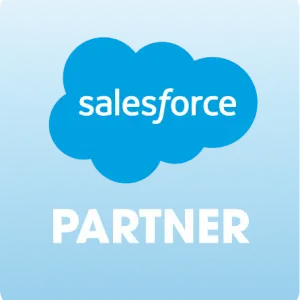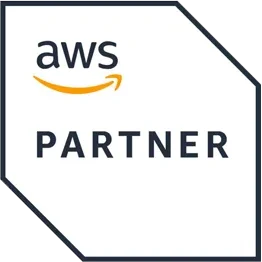What Is Software Delivery?
 Software delivery is the entire process of getting a software product to customers, from conceptualization, through development, and ending in the actual purchase and installation of the product’s license.
Software delivery is the entire process of getting a software product to customers, from conceptualization, through development, and ending in the actual purchase and installation of the product’s license.
In most cases, the term refers to the beginning of the process — that is, the series of steps the various teams of the company follow in order to prepare the software for its deployment to the customer. In some cases, the term refers to the manner in which the customer gains access to the product. In this article, we will cover both.
What Is a Software Delivery Model?
Software delivery models are approaches used by the team to prepare the software product for the market. These models may also be known as the software delivery lifecycle, software delivery pipeline, or simply the software delivery process.
There are many different software delivery models businesses have developed, and there’s no single approach that always works best. Moreover, many companies use some combination of software delivery models. In the past, what’s currently known as the “waterfall” approach was the gold standard for software development, but today, the “agile” methodology has largely taken its place. The agile method is also associated with additional, related models and methodologies, such as DevOps, CD/CI (continuous delivery and continuous integration), kanban, and scrum.
What are the waterfall and agile approaches to software delivery?
The Waterfall approach
The waterfall approach is a linear or sequential software delivery process. That is, each phase of the process depends on the completion of a previous phase. It’s called the “waterfall” approach because of its continuous “downward” flow: the process moves sequentially from conception to deployment following a set series of steps.
Waterfall is among the less flexible software delivery models. It originated in industries such as manufacturing and construction, where each step of the way depended strongly on the step that came before. If there was a mistake made while laying the foundation of a building, the entire structure would be faulty no matter how great a job was done on the rest of the building. In the past, the software development process was conceived as being very similar. A typical software delivery pipeline using the waterfall approach might look like this:
- A business analyst writes up a business requirements document that lists everything the business needed the software to do, from overall strategy all the way down to specific details on functions and interface.
- Technologists take this document and add a technical requirements document to complement it, detailing the structure of the application and its data, functional designs, and other requirements. Together, these two documents were known as a spec.
- The spec is passed to the coders, who implement the requirements and create the code for the various features.
- The codes are integrated to create the software.
- The software is tested for quality and functionality.
- The software is released to the market.
The entire process could take months or years.
In some cases, this linear approach is necessary to create a functioning software product, but today many see it as being clunky and unnecessarily slow. We’ll take a closer look at why that’s important later on.
The Agile approach
The word agile implies lightness, speed, flexibility, and the ability to change direction easily. Wikipedia describes agile software development practices as “discovering requirements and developing solutions through the collaborative effort of self-organizing and cross-functional teams and their customer(s)/end-user(s).” Instead of approaching software like a construction project built from the ground up step by step, the agile model breaks the project down into smaller components that can be developed independently by a team specializing in a specific feature or functionality. Then, these components are pulled together to create the final product.
This approach allows for a software delivery lifecycle that is much more flexible, collaborative, efficient, and iterative. Instead of completing tasks in a matter of months, using the agile approach, developers can meet their goals in a matter of weeks. This allows tech companies to release new products and updates much more quickly and efficiently than before.
There are lots of different ways to implement this approach. Here’s an example of how an agile software delivery pipeline might look like using the scrum methodology:
- A product owner makes a list of requirements, called a product backlog.
- The scrum team takes the first item on the list and makes a plan to implement it.
- The team completes the task in a 2-4 week period known as a sprint. Each day they meet to assess their progress and make any changes if necessary.
- The team completes the sprint, reviews their work, and when it's complete, they begin a new sprint.
- This process repeats until the full product is complete.
Once again, there are many other methods that fall under the agile umbrella or are related to it. What all of them have in common is that they create a software delivery lifecycle that is efficient as possible and allows the team to deliver the software to the customer quickly without compromising on quality.
Software Delivery Management
With all these methodologies and so many separate factors that need to come together to create a smooth delivery process, it can be hard to see the forest for the trees. That’s why some companies will hire a software delivery manager. The software delivery manager is responsible for overseeing the delivery process and making sure everything is running as smoothly as possible, from the initial planning phase through the sprints and development process until the software is ready for the market.
There is also a new category of software called software delivery management (SDM) that can be a game-changer to the process, even when a human software delivery manager is involved.
The purpose of software delivery management is to pull together all the data from the entire pipeline, from the back-office business systems to the software delivery toolchain, and provide the organization with a complete view, not only of the features in development but how they are being used and whether they are driving growth.
Software delivery management helps break down silos, giving the entire organization access to all the relevant information about where things stand. It makes it much easier to collaborate and share insights. In other words, it’s the mother of all software delivery tools.
Why Is It Important for Software Products to Be Developed and Delivered Quickly?
Simply put: you snooze, you lose. The software industry is extremely competitive, and tech companies are releasing new products at a dizzying pace. According to Statista, in 2020, an average of 6,000 new apps were released for Android every single day. What’s more, customers’ demands have increased and become more specific. Companies must develop new features that meet those needs as quickly as possible to keep their customers satisfied.
Software Delivery Best Practices
So how do you streamline your software delivery pipeline and develop software quickly without compromising on quality?
Hire the best in the field
One of the most important software delivery best practices is to make sure your teams comprise consummate professionals of the highest caliber. Agile software delivery lifecycles give a lot more power and flexibility to the team, but they also place more responsibility on them. You need team members who you can depend on to be quick and effective, communicate clearly, work seamlessly together, and spot and solve problems independently. Whether it’s in-house or outsource — make sure you’re hiring the very best.
Provide the right software delivery tools and equipment
Even the most talented team can only do so much without the appropriate software delivery tools. Another of the most important software delivery best practices is to make sure your team has everything they need, from hardware to software and testing applications.
Be clear on goals and expectations
One advantage of the waterfall approach is that it’s very methodical when it comes to goals and expectations — but a lot can get lost in a 200-word spec. Breaking the project down into smaller components makes it simpler in some ways, but you need to be sure that everyone involved in the project knows exactly what the goals and expectations are. The more aligned the team is, the faster and more efficient the software delivery lifecycle will be.
Pick software delivery methods that best suit your project
Whether it’s waterfall, agile, scrum, or something else, pick a methodology that will work best for the team you’ve assembled and the project you’re working on.
Test your software rigorously
All that hard work and talent you’ve invested in the product will come to nothing if the software doesn’t work. Invest in a rigorous testing regimen and ensure that everything is working properly. This should work in parallel to the coding so you can tweak the product if you find anything that needs adjustment. It’s especially effective to combine AI testing tools with human testers to catch problems early.
Celebrate milestones
Agile software delivery is all about baby steps. Keep your team motivated by celebrating each milestone along the way, even the minor ones.
Be flexible and plan for change
Change is inevitable: it’s true for life in general, and it’s even more true when it comes to software development. You need to respond to the facts on the ground, and they are always changing. Expect the unexpected and don’t be discouraged if things get derailed for a bit.
Consider software delivery management
Whether by a human software delivery manager, software delivery management software, or a combination of both, making sure you have someone or something helping you make sense of all the components of the process is key to success.
Licensing Management and Software Delivery Methods
Hooray, your software is up and running and ready for the customers! But how will your software actually reach them?
In all the rush to create fantastic, functioning software, you may have forgotten that you need to have a way to get it to your customers while protecting it against theft and piracy. All your hard work would go to waste if you delivered your software only to have it copied illegally and distributed to non-paying customers. What’s more, you need to provide a model of delivery that makes it easy and affordable for your target clients to purchase and use it.
Enter licensing management. Licensing management is a crucial part of the final stage of the software delivery process. Not only does it ensure that your product reaches paying customers securely, but it can also provide insights about how your customers are using your software and help you manage entitlements in a systematic way.
There are a variety of models for delivering software to clients, from on-premise and hardware-based solutions to SaaS and cloud-based solutions. Discover more about the various software delivery methods.
Thales Sentinel Can Help You with Software Delivery Management
Thales Sentinel can help you streamline your entire software delivery and management process with a fully integrated, entitlement-driven Electronic Software Delivery solution. With Sentinel, you can manage your entitlements and software downloads end-to-end, ensuring that your customers download only what they need and giving you insight into how customers are using your product.

Navigate The Process of Licensing, Delivering, and Protecting Your Software - White Paper
How to Get Software Licensing Right The First TimeCheck out our practical guide to navigating the process of licensing, delivering, and protecting your software. Discover the importance of optimizing your software licensing. Avoid common mistakes with the expertise you...

Subscription Models - Candela Case Study
Generate New Recurring Revenue with Subscription-Based Models like Candela - Case Study Candela Generates Recurring Revenue With New Subscription-Based Business Models Candela is a world-leading medical aesthetic device company, with an expansive global footprint in 86...



